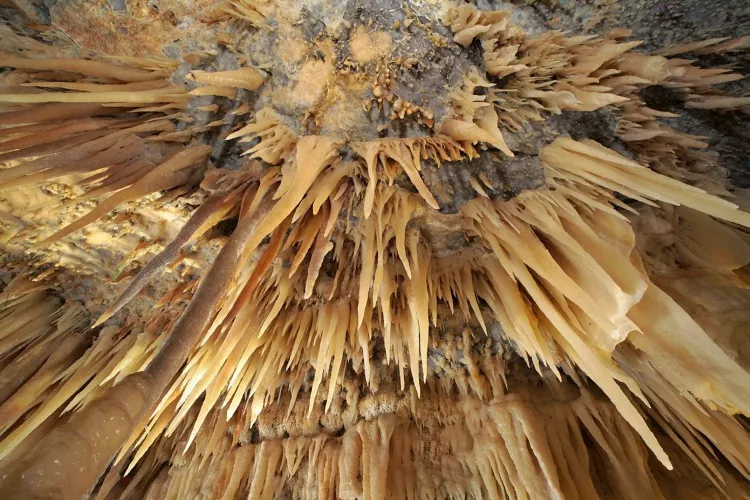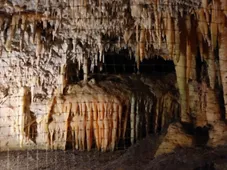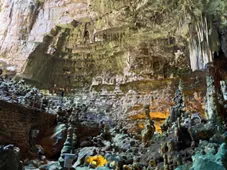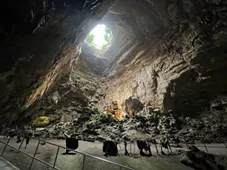This content was automatically translated. View the original text.




Overview
The Castellana Caves have ancient origins: they were formed around 90 million years ago, during the Late Cretaceous period, when the area was submerged beneath a primordial sea. At that time, the seabed accumulated sediments composed of mollusk remains and vegetation, which, over millennia, compacted to form thick layers of limestone rock. The continuous action of water, seeping underground, then sculpted these rocks, carving out an intricate system of caves and tunnels through the process of karstification.
The main access point to the cave complex is the Grave, a spectacular natural cavity notable for its size: approximately 100 meters long, 50 meters wide, and 60 meters deep. From here begins the tourist route, which takes visitors through environments of extraordinary beauty and atmosphere.
Among the most fascinating stops are:
The She-Wolf Cavern, where a rock formation resembles the figure of the Capitoline Wolf.
The Cavern of Monuments, featuring stalagmites that appear to replicate famous buildings such as the Milan Cathedral or the Leaning Tower of Pisa.
The Snake Corridor, a narrow, winding passage with sculpted walls.
The White Cave, famous for its extraordinary brightness, due to the purity of the calcium carbonate that coats it—so much so that it is considered one of the whitest caves in the world.
During the visit, you also pass through evocatively named chambers such as Little Paradise, Owl Cavern, Desert Corridor, and Crystal Lake, each with unique features that make the experience unforgettable.